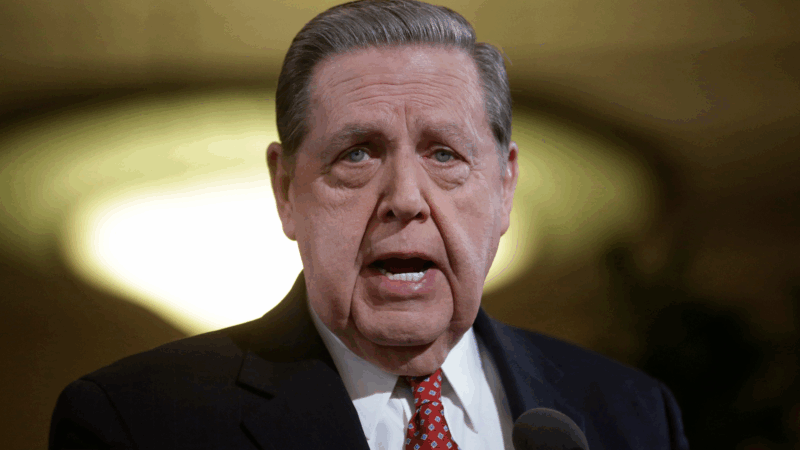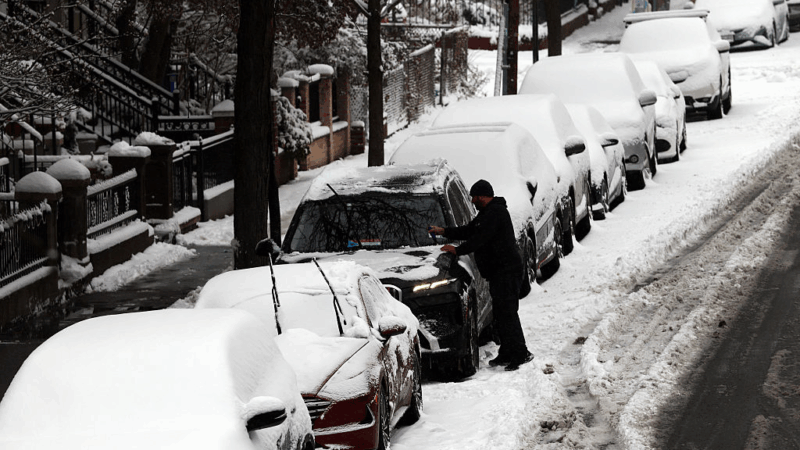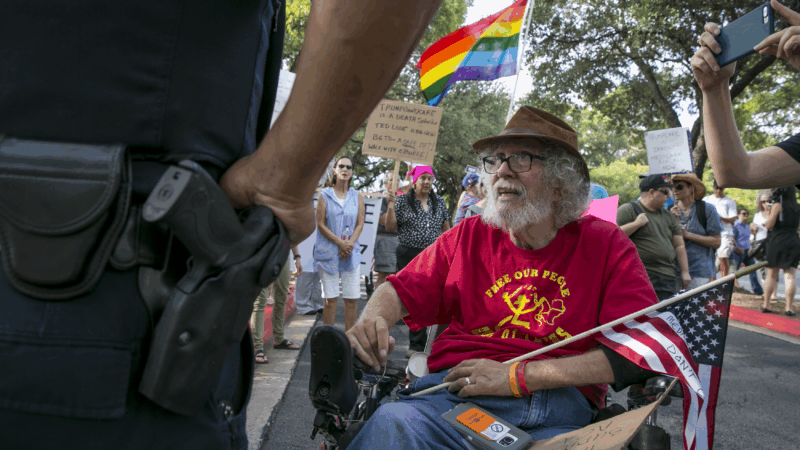Trump wants to restore statues and monuments. Will that happen?
President Trump signed an executive order on Thursday aimed at “restoring truth and sanity to American history” – decrying what the order characterized as efforts to “undermine the remarkable achievements of the United States by casting its founding principles and historical milestones in a negative light.” The order calls for the removal of “divisive race-centered ideology” from the Smithsonian’s museums and research centers. It also calls on the Secretary of the Interior to restore public monuments, statues and other markers that have been removed or changed since 2020. But it’s unclear how many sites — and which ones — will be impacted by the executive order.
President Trump has called on the Interior Secretary to determine whether any memorials, statues, markers or properties that fall within the Department of the Interior’s jurisdiction “have been removed or changed to perpetuate a false reconstruction of American history, inappropriately minimize the value of certain historical events or figures, or include any other improper partisan ideology” since January 1, 2020, more than a year before Trump left office in his first term. If so, the executive order calls on the Department to reinstate any such statues or monuments. The Department of the Interior includes the National Park Service, the Bureau of Indian Affairs, and nine other bureaus. The Department did not respond to NPR’s request for comment regarding the executive order.
The order also directs the Department of the Interior to ensure that any monuments, statues or memorials under its jurisdiction “do not contain descriptions, depictions, or other content that inappropriately disparage Americans past or living (including persons living in colonial times), and instead focus on the greatness of the achievements and progress of the American people or, with respect to natural features, the beauty, abundance, and grandeur of the American landscape.”
A national reckoning on race – and monuments to the past – grew after George Floyd was killed by police in 2020. More than 200 public Confederate symbols across the country were removed, relocated or renamed within about a year and a half, according to research by the Southern Poverty Law Center (SPLC). Seth Levi, Chief Program Strategy Officer of the SPLC, says many of these removals did not take place on lands under the Department of the Interior’s jurisdiction.
“Even for the objects that are on public land, it’s normally land that’s owned and controlled by municipalities or state governments. I’m not actually aware of any removals on National Park Service land,” Levi says. “There have been removals on land that’s controlled by the Department of Defense with the names of military bases, [but] it’s unclear to us how many monuments have already been removed that this would actually apply to.”
Though action from Thursday’s executive order might be limited for now, Levi says he believes the Trump administration is trying to “minimize the fact that enslavement was a huge part of our history” and that the contributions of racial minorities to American history “seem to be under threat.” He also points to SPLC data showing that historically, Confederate monuments and names on schools, roads and other sites grew in the U.S. during the beginning of the Jim Crow era and around the time of the landmark case Brown v. Board of Education, in which the Supreme Court ruled in 1954 that racial segregation in public schools is unconstitutional.
The National Park Service has already been revising its websites
Thursday’s executive order comes on the heels of other changes to National Park Service websites. After President Trump’s January executive order about gender ideology declared that “It is the policy of the United States to recognize two sexes, male and female,” the NPS removed all references to transgender people from the Stonewall National Monument website. Weeks later, it had deleted websites containing information about transgender activists like Marsha P. Johnson and Sylvia Rivera.
The National Parks Conservation Association, a nonpartisan group that advocates to protect national parks, issued a statement regarding Thursday’s order. “Across the country, our national parks protect vital American history, from the birthplaces of American presidents to the birthplaces of our democracy. Our parks tell stories from the civil rights movement, the Civil War, and beyond,” said Alan Spears, a senior director at the National Parks Conservation Association. “Every American who cares about our country’s history should be worried about what people, places, and themes disappear next.”
Last year, the National Park Foundation, the fundraising partner of the NPS, announced a historic grant of $100 million from the philanthropic organization the Lilly Endowment, part of which would help “Tell a More Complete Story of America: Delivering a more comprehensive historical narrative, including the experiences of communities whose voices and contributions have not been fully told as a part of the American story.” The Lilly Endowment declined to comment on whether Trump’s executive order would impact the grant. The National Park Foundation did not respond to NPR’s request for comment.
Erin Thompson, author of Smashing Statues: The Rise and Fall of America’s Public Monuments, says the wording of the order – and specifically the phrase “false reconstruction of American history” – caught her eye. “The use of the term reconstruction is pretty loaded there, referring to the post-Civil War period of what some people regard as an attack on white Southern culture,” she says. “It fits right into the narrative of the ‘Lost Cause,’ making an argument not only that the Civil War wasn’t about slavery, but implying that it was about slavery is somehow an insult to Southern strength.”
“You can’t control historical memory by controlling monuments,” says Thompson. “There’s so many people who tell their children other stories, who lead tour groups, who write books. There’s so many ways of learning about history that are not looking at some chunk of stone.”
Jeffrey R. Holland, next in line to lead Church of Jesus Christ of Latter-day Saints, dies at 85
Jeffrey R. Holland led the Quorum of the Twelve Apostles, a key governing body. He was next in line to become the church's president.
Winter storm brings heavy snow and ice to busy holiday travel weekend
A powerful winter storm is impacting parts of the U.S. with major snowfall, ice, and below zero wind chills. The conditions are disrupting holiday travel and could last through next week.
Disability rights advocate Bob Kafka dead at 79
Bob Kafka was an organizer with ADAPT (American Disabled for Attendant Programs Today), a group which advocates for policy change to support people with disabilities.
‘It’s behind you!’ How Britain goes wild for pantomimes during the holidays
Pantomimes are plays based on a well-known story — often a fairy tale — which are given a bawdy twist. The audience is expected to join in throughout, shouting as loudly as they can.
Kennedy Center vows to sue musician who canceled performance over Trump name change
The Kennedy Center is planning legal action after jazz musician Chuck Redd canceled an annual holiday concert. Redd pulled out after President Trump's name appeared on the building.
Our top global photo stories from 2025: Fearless women, solo polar bear, healing soups
These stunning photos include a polar bear in a Chinese zoo, a teen in Zambia facing an uncertain future, Mongolian kids watching TV in a tent, a chef prepping a bowl of good-for-you soup.







